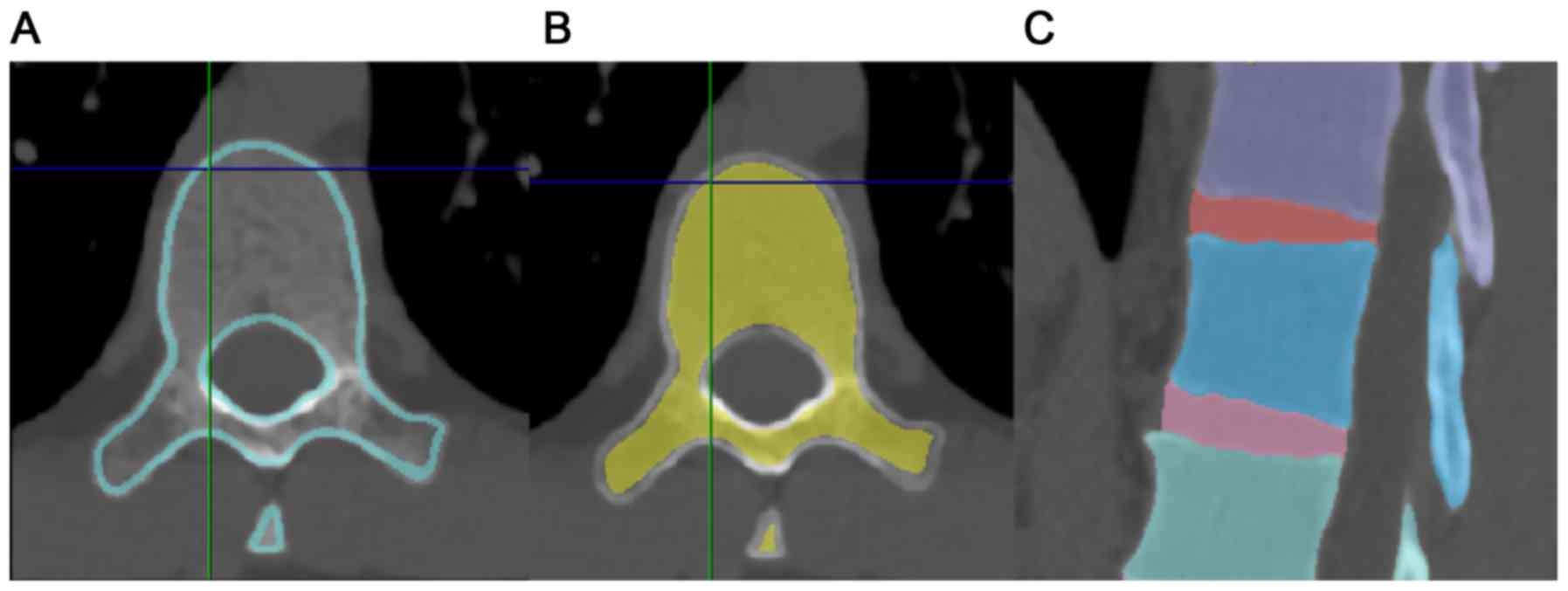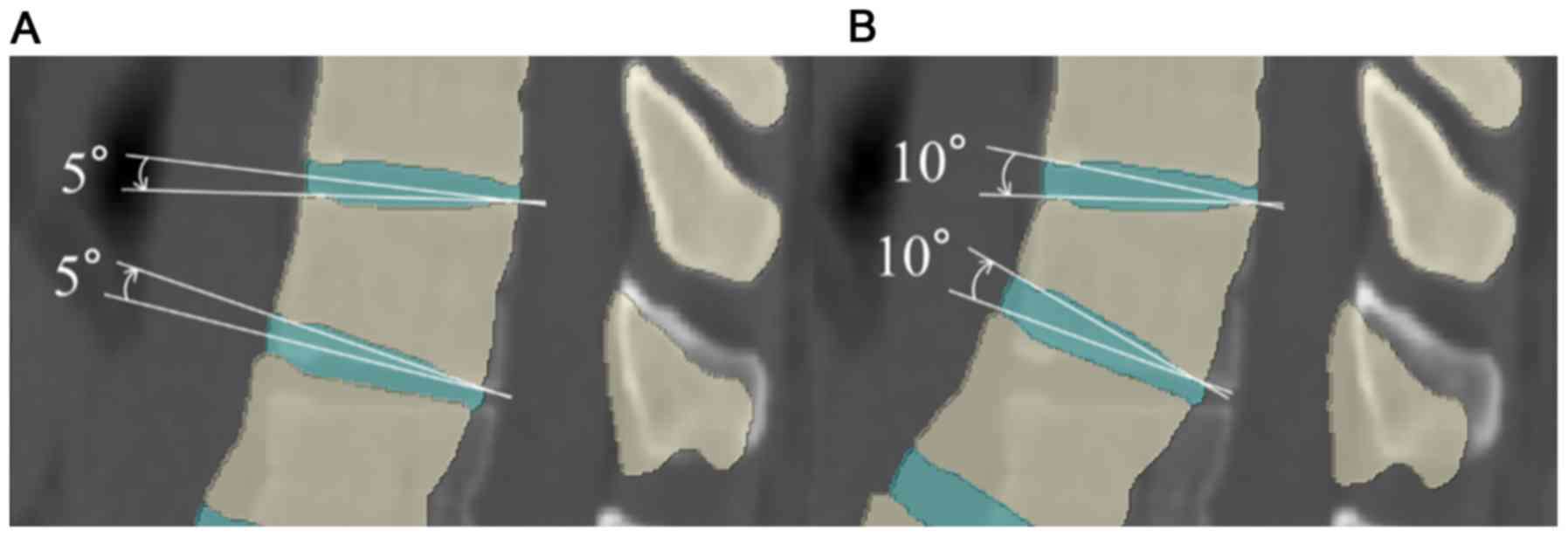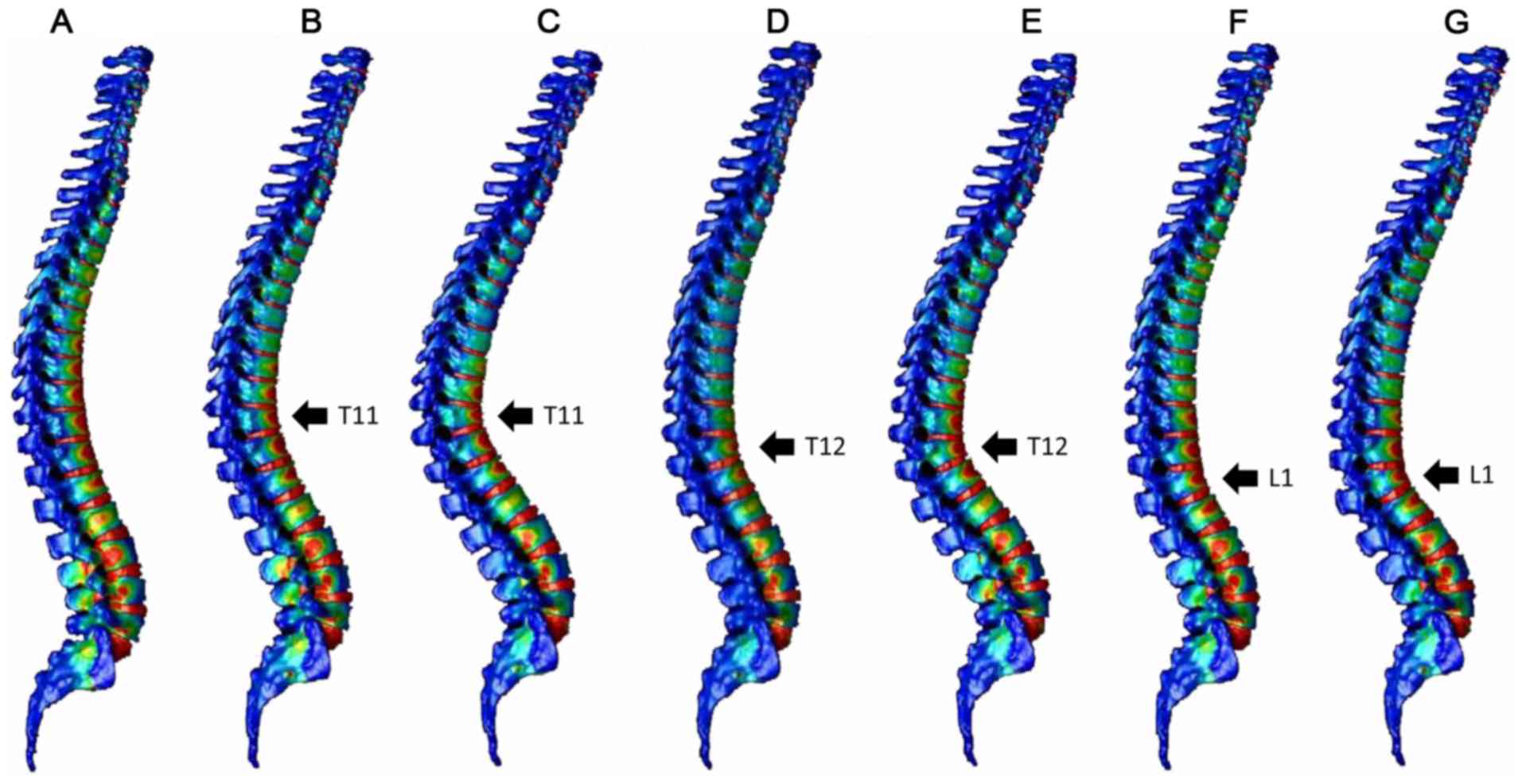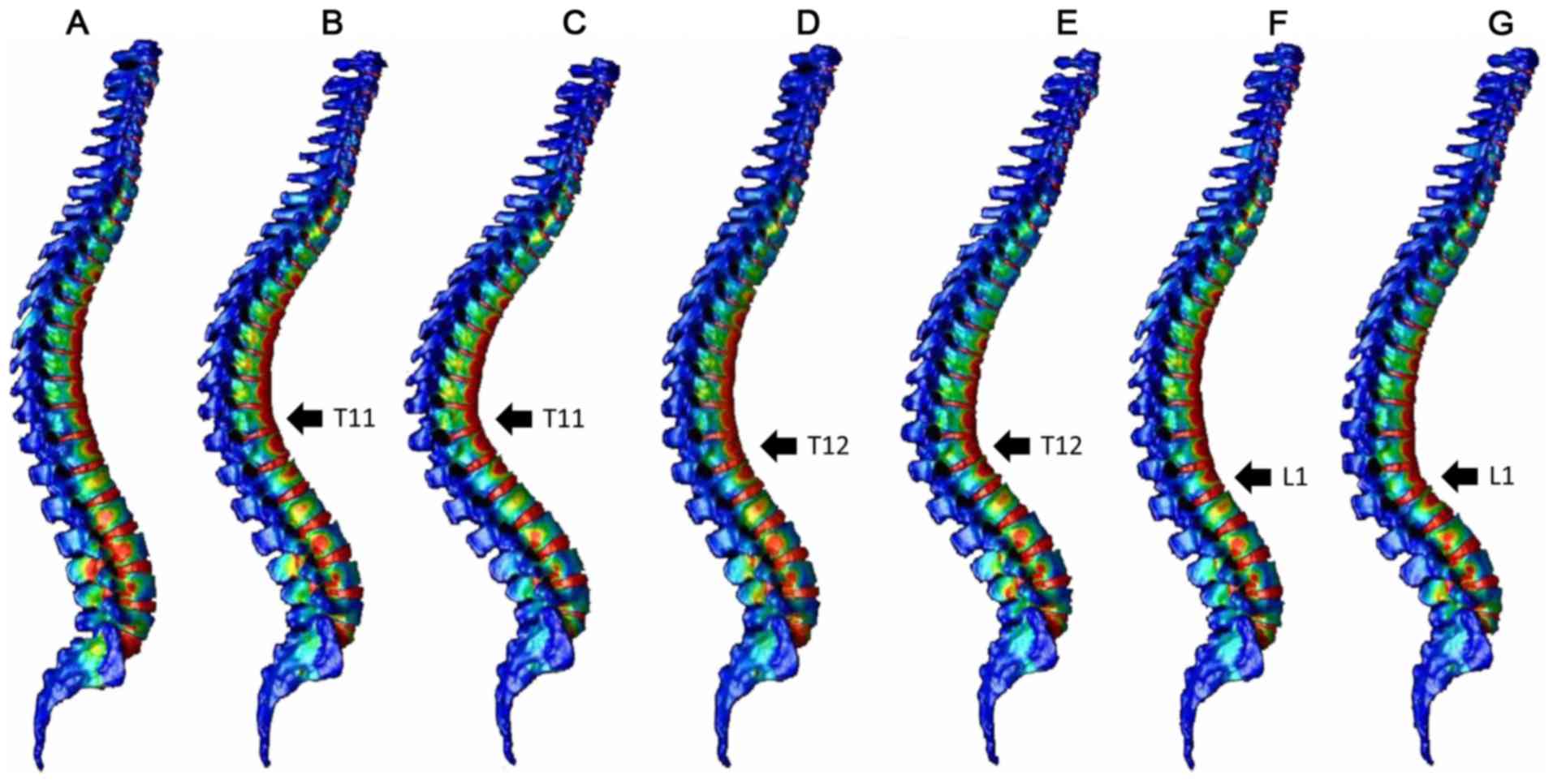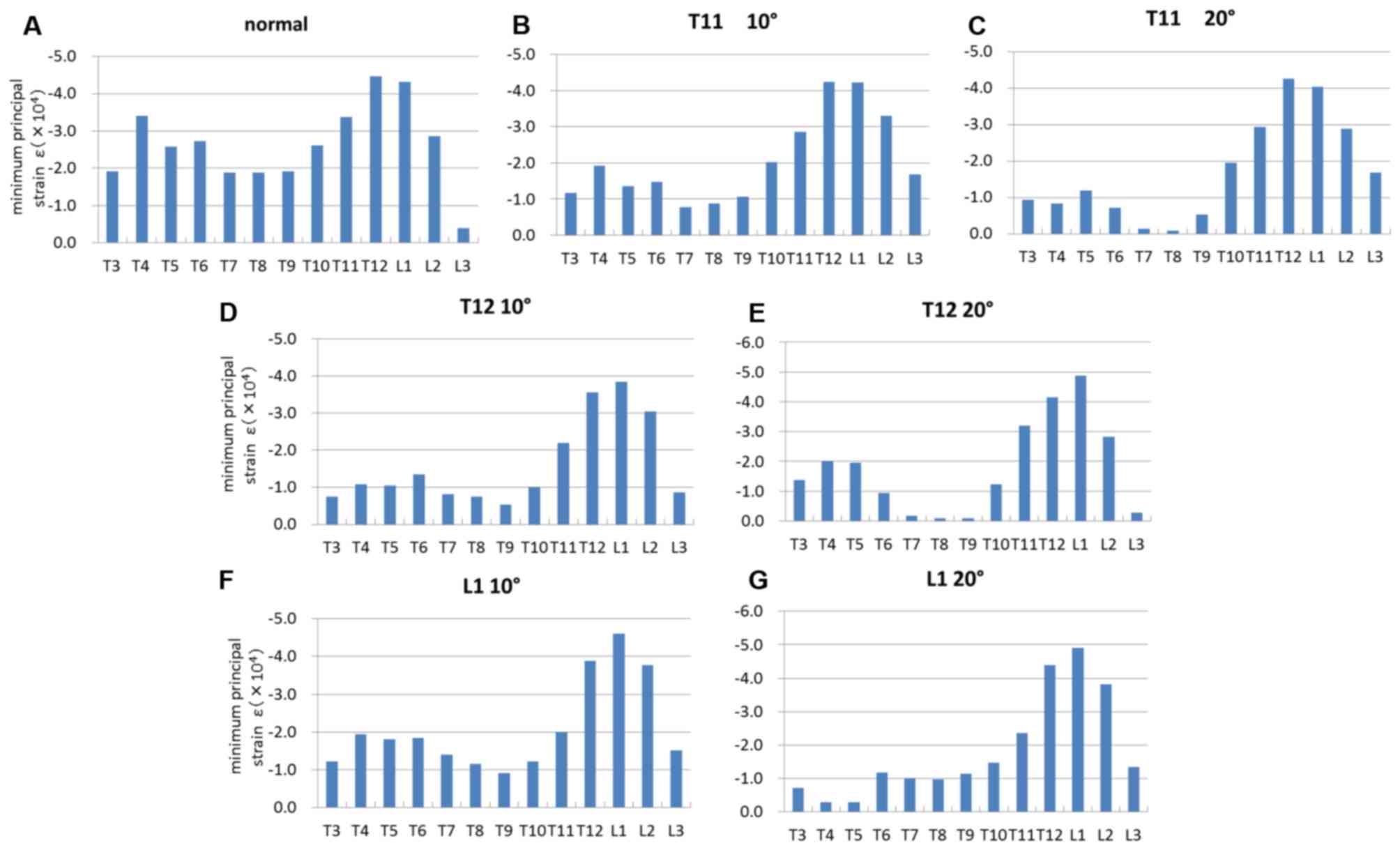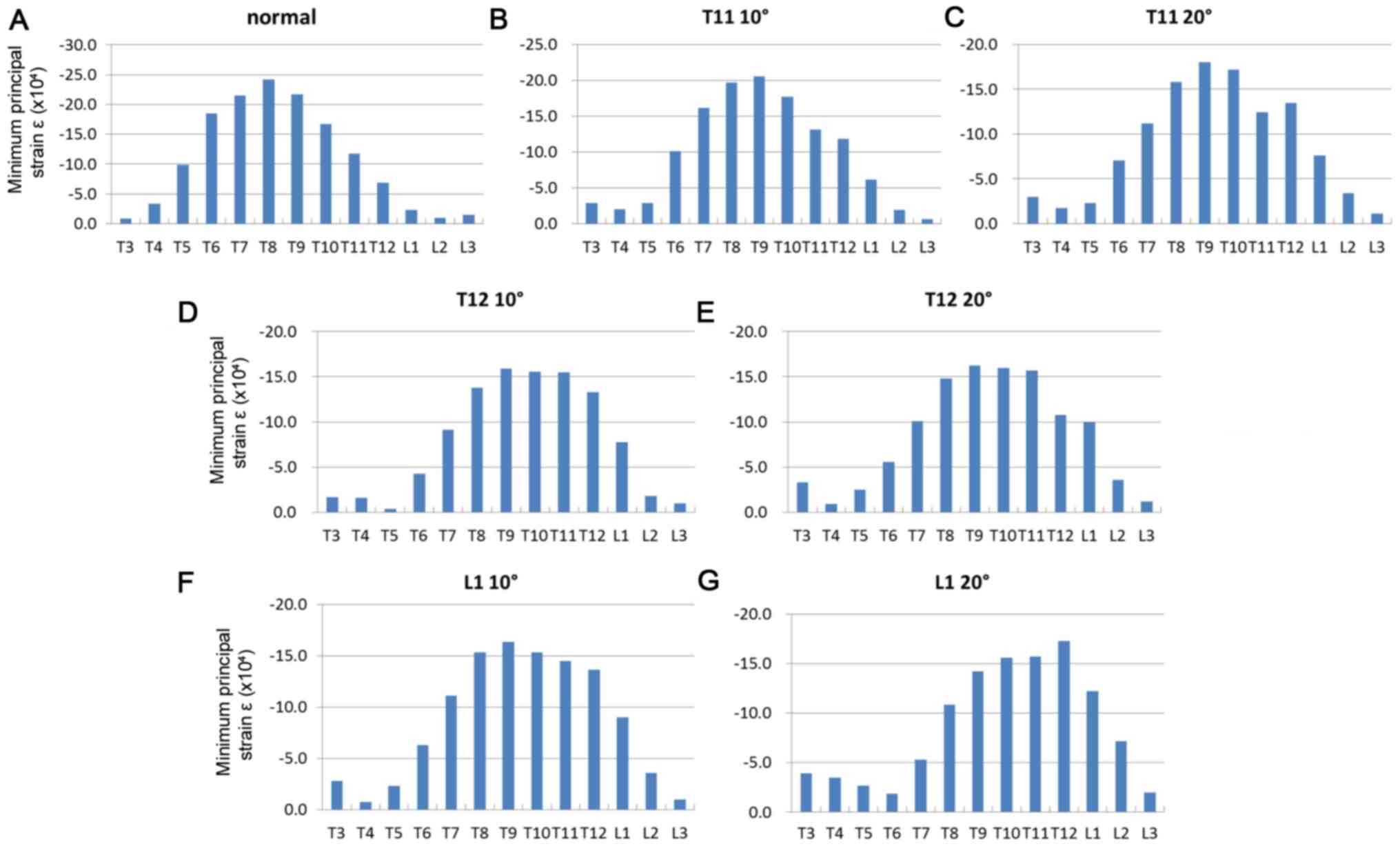|
1
|
Yoshimura N, Kinoshita H, Oka H, Muraki S,
Mabuchi A, Kawaguchi H and Nakamura K: Cumulative incidence and
changes in the prevalence of vertebral fractures in a rural
Japanese community: A 10-year follow-up of the Miyama cohort. Arch
Osteoporos. 1:43–49. 2006. View Article : Google Scholar
|
|
2
|
Yoshimura N, Muraki S, Oka H, Mabuchi A,
En-Yo Y, Yoshida M, Saika A, Yoshida H, Suzuki T, Yamamoto S, et
al: Prevalence of knee osteoarthritis, lumbar spondylosis, and
osteoporosis in Japanese men and women: The research on
osteoarthritis/osteoporosis against disability study. J Bone Miner
Metab. 27:620–628. 2009. View Article : Google Scholar : PubMed/NCBI
|
|
3
|
Kitazawa A, Kushida K, Yamazaki K and
Inoue T: Prevalence of vertebral fractures in a population-based
sample in Japan. J Bone Miner Metab. 19:115–118. 2001. View Article : Google Scholar : PubMed/NCBI
|
|
4
|
Wasnich RD: Vertebral fracture
epidemiology. Bone. 18 3 Suppl:179S–183S. 1996. View Article : Google Scholar : PubMed/NCBI
|
|
5
|
Ismail AA, Cooper C, Felsenberg D, Varlow
J, Kanis JA, Silman AJ and O'Neill TW: Number and type of vertebral
deformities: Epidemiological characteristics and relation to back
pain and height loss. European vertebral osteoporosis study group.
Osteoporos Int. 9:206–213. 1999. View Article : Google Scholar : PubMed/NCBI
|
|
6
|
Panjabi MM: Physical properties and
functional biomechanics of the spine = Clinical Biomechanics of the
Spine. Panjabi MM and White AA: LWW Corp.; Philadelphia, PA: pp.
1–76. 1990
|
|
7
|
Lindsay R, Silverman SL, Cooper C, Hanley
DA, Barton I, Broy SB, Licata A, Benhamou L, Geusens P, Flowers K,
et al: Risk of new vertebral fracture in the year following a
fracture. JAMA. 285:320–323. 2001. View Article : Google Scholar : PubMed/NCBI
|
|
8
|
Hsu CC, Chao CK, Wang JL, Hou SM, Tsai YT
and Lin J: Increase of pullout strength of spinal pedicle screws
with conical core: Biomechanical tests and finite element analyses.
J Orthop Res. 23:788–794. 2005. View Article : Google Scholar : PubMed/NCBI
|
|
9
|
Kilinçer C, Inceoglu S, Sohn MJ, Ferrara
LA and Benzel EC: Effects of angle and laminectomy on triangulated
pedicle screws. J Clin Neurosci. 14:1186–1191. 2007. View Article : Google Scholar : PubMed/NCBI
|
|
10
|
Hashemi A, Bednar D and Ziada S: Pullout
strength of pedicle screws augmented with particulate calcium
phosphate: An experimental study. Spine J. 9:404–410. 2009.
View Article : Google Scholar : PubMed/NCBI
|
|
11
|
Sairyo K, Goel VK, Masuda A, Vishnubhotla
S, Faizan A, Biyani A, Ebraheim N, Yonekura D, Murakami R and Terai
T: Three-dimensional finite element analysis of the pediatric
lumbar spine. Part I: pathomechanism of apophyseal bony ring
fracture. Eur Spine J. 15:923–929. 2006. View Article : Google Scholar : PubMed/NCBI
|
|
12
|
Sairyo K, Goel VK, Masuda A, Vishnubhotla
S, Faizan A, Biyani A, Ebraheim N, Yonekura D, Murakami R and Terai
T: Three dimensional finite element analysis of the pediatric
lumbar spine. Part II: Biomechanical change as the initiating
factor for pediatric isthmic spondylolisthesis at the growth plate.
Eur Spine J. 15:930–935. 2006. View Article : Google Scholar : PubMed/NCBI
|
|
13
|
Wells GA, Cranney A, Peterson J, Boucher
M, Shea B, Robinson V, Coyle D and Tugwell P: Etidronate for the
primary and secondary prevention of osteoporotic fractures in
postmenopausal women. Cochrane Database Syst Rev.
23:CD0033762008.
|
|
14
|
Wells GA, Cranney A, Peterson J, Boucher
M, Shea B, Robinson V, Coyle D and Tugwell P: Alendronate for the
primary and secondary prevention of osteoporotic fractures in
postmenopausal women. Cochrane Database Syst Rev.
23:CD0011552008.
|
|
15
|
Matsumoto T, Hagino H, Shiraki M, Fukunaga
M, Nakano T, Takaoka K, Morii H, Ohashi Y and Nakamura T: Effect of
daily oral minodronate on vertebral fractures in Japanese
postmenopausal women with established osteoporosis: A randomized
placebo-controlled double-blind study. Osteoporos Int.
20:1429–1437. 2009. View Article : Google Scholar : PubMed/NCBI
|
|
16
|
Wells G, Cranney A, Peterson J, Boucher M,
Shea B, Robinson V, Coyle D and Tugwell P: Risedronate for the
primary and secondary prevention of osteoporotic fractures in
postmenopausal women. Cochrane Database Syst Rev.
23:CD0045232008.
|
|
17
|
Chesnut CH III, Skag A, Christiansen C,
Recker R, Stakkestad JA, Hoiseth A, Felsenberg D, Huss H, Gilbride
J, Schimmer RC, et al: Effects of oral ibandronate administered
daily or intermittently on fracture risk in postmenopausal
osteoporosis. J Bone Miner Res. 19:1241–1249. 2004. View Article : Google Scholar : PubMed/NCBI
|
|
18
|
Neer RM, Arnaud CD, Zanchetta JR, Prince
R, Gaich GA, Reginster JY, Hodsman AB, Eriksen EF, Ish-Shalom S,
Genant HK, et al: Effect of parathyroid hormone (1–34) on fractures
and bone mineral density in postmenopausal women with osteoporosis.
N Engl J Med. 344:1434–1441. 2001. View Article : Google Scholar : PubMed/NCBI
|
|
19
|
Nakamura T, Sugimoto T, Nakano T,
Kishimoto H, Ito M, Fukunaga M, Hagino H, Sone T, Yoshikawa H,
Nishizawa Y, et al: Randomized Teriparatide [human parathyroid
hormone (PTH) 1–34] once-weekly efficacy research (TOWER) trial for
examining the reduction in new vertebral fractures in subjects with
primary osteoporosis and high fracture risk. J Clin Endocrinol
Metab. 97:3097–3106. 2012. View Article : Google Scholar : PubMed/NCBI
|
|
20
|
Cummings SR, San Martin J, McClung MR,
Siris ES, Eastell R, Reid IR, Delmas P, Zoog HB, Austin M, Wang A,
et al: Denosumab for prevention of fractures in postmenopausal
women with osteoporosis. N Engl J Med. 361:756–765. 2009.
View Article : Google Scholar : PubMed/NCBI
|
|
21
|
Andrei D, Popa I, Brad S, Iancu A, Oprea
M, Vasilian C and Poenaru DV: The variability of vertebral body
volume and pain associated with osteoporotic vertebral fractures:
Conservative treatment versus percutaneous transpedicular
vertebroplasty. Int Orthop. 41:963–968. 2017. View Article : Google Scholar : PubMed/NCBI
|
|
22
|
Kanchiku T, Imajo Y, Suzuki H, Yoshida Y,
Nishida N, Funaba M and Taguchi T: Operative methods for delayed
paralysis after osteoporotic vertebral fracture. J Orthop Surg
(Hong Kong). 25:1–7. 2017. View Article : Google Scholar
|
|
23
|
Gelb DE, Lenke LG, Bridwell KH, Blanke K
and McEnery KW: An analysis of sagittal spinal alignment in 100
asymptomatic middle and older aged volunteers. Spine (Phila Pa
1976). 20:1351–1358. 1995. View Article : Google Scholar : PubMed/NCBI
|
|
24
|
Xie F, Zhou H, Zhao W and Huang L: A
comparative study on the mechanical behavior of intervertebral disc
using hyperelastic finite element model. Technol Health Care.
25:177–187. 2017. View Article : Google Scholar : PubMed/NCBI
|
|
25
|
Gertzbein SD: Scoliosis research society.
Multicenter spine fracture study. Spine (Phila Pa 1976).
17:528–540. 1992. View Article : Google Scholar : PubMed/NCBI
|
|
26
|
Jackson RP and Hales C: Congruent
spinopelvic alignment on standing lateral radiographs of adult
volunteers. Spine (Phila Pa 1976). 25:2808–2815. 2000. View Article : Google Scholar : PubMed/NCBI
|
|
27
|
Glassman SD, Berven S, Bridwell K, Horton
W and Dimar JR: Correlation of radiographic parameters and clinical
symptoms in adult scoliosis. Spine (Phila Pa 1976). 30:682–688.
2005. View Article : Google Scholar : PubMed/NCBI
|
|
28
|
Glassman SD, Bridwell K, Dimar JR, Horton
W, Berven S and Schwab F: The impact of positive sagittal balance
in adult spinal deformity. Spine (Phila Pa 1976). 30:2024–2029.
2005. View Article : Google Scholar : PubMed/NCBI
|
|
29
|
Miyakoshi N, Kasukawa Y, Sasaki H, Kamo K
and Shimada Y: Impact of spinal kyphosis on gastroesophageal reflux
disease symptoms in patients with osteoporosis. Osteoporos Int.
20:1193–1198. 2009. View Article : Google Scholar : PubMed/NCBI
|
|
30
|
Takahashi T, Ishida K, Hirose D, Nagano Y,
Okumiya K, Nishinaga M, Matsubayashi K, Doi Y, Tani T and Yamamoto
H: Trunk deformity is associated with a reduction in outdoor
activities of daily living and life satisfaction in
community-dwelling older people. Osteoporos Int. 16:273–279. 2005.
View Article : Google Scholar : PubMed/NCBI
|
|
31
|
Wardlaw D, Van Meirhaeghe J, Ranstam J,
Bastian L and Boonen S: Balloon kyphoplasty in patients with
osteoporotic vertebral compression fractures. Expert Rev Med
Devices. 9:423–436. 2012. View Article : Google Scholar : PubMed/NCBI
|
|
32
|
Imai K, Ohnishi I, Bessho M and Nakamura
K: Nonlinear finite element model predicts vertebral bone strength
and fracture site. Spine (Phila Pa 1976). 31:1789–1794. 2006.
View Article : Google Scholar : PubMed/NCBI
|
|
33
|
Tawara D, Sakamoto J, Murakami H, Kawahara
N, Oda J and Tomita K: Mechanical evaluation by patient-specific
finite element analyses demonstrates therapeutic effects for
osteoporotic vertebrae. J Mech Behav Biomed Mater. 3:31–40. 2010.
View Article : Google Scholar : PubMed/NCBI
|
|
34
|
Tawara D, Sakamoto J, Murakami H, Kawahara
N, Oda J and Tomita K: Mechanical therapeutic effects in
osteoporotic L1-vertebrae evaluated by nonlinear patient-specific
finite element analysis. JBSE. 5:499–514. 2010. View Article : Google Scholar
|
|
35
|
Tawara D, Sakamoto J, Murakami H, Kawahara
N and Tomita K: Patient-specific finite element analyses detect
significant mechanical therapeutic effects on osteoporotic
vertebrae during a three-year treatment. JBSE. 6:248–261. 2011.
View Article : Google Scholar
|
|
36
|
Itoi E, Sakurai M, Mizunashi K, Sato K and
Kasama F: Long-term observations of vertebral fractures in spinal
osteoporotics. Calcif Tissue Int. 47:202–208. 1990. View Article : Google Scholar : PubMed/NCBI
|
|
37
|
Iyer S, Lenke LG, Nemani VM, Albert TJ,
Sides BA, Metz LN, Cunningham ME and Kim HJ: Variations in sagittal
alignment parameters based on age: A prospective study of
asymptomatic volunteers using full-body radiographs. Spine (Phila
Pa 1976). 41:1826–1836. 2016. View Article : Google Scholar : PubMed/NCBI
|















